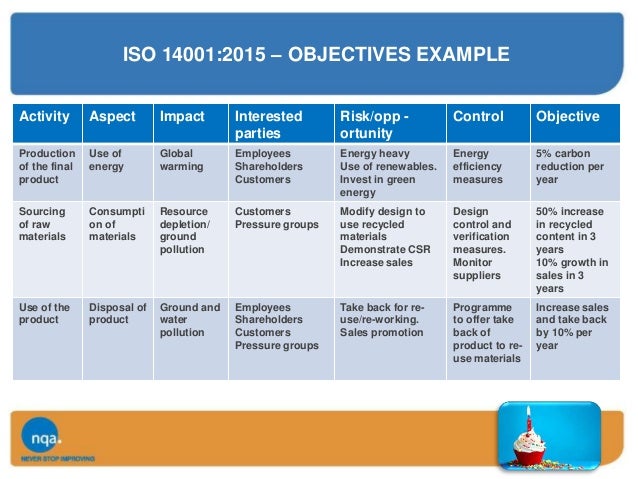Aspect And Impact Register Iso 14001 Audit

• • • • If you are confused by the standard clause 4.3.1, you are not alone. One of the most confusing parts of the ISO 14001 standard is the concept of environmental aspects, what they are, and how they should be used by the organization.
ENVIRONMENTAL ASPECTS REGISTER ISO 14001 Doc. Version Date Template Author Page. Environmental Impact Environmental Aspect L Large Aspect. Aspect And Impact Register Iso 14001 Certification Cost. Option 2 is often referred to as a customer or 2nd- party audit, which is an acceptable market term.
This is an important element of the ISO 14001 environmental management system, as it is the first step outlined in the planning process, so understanding it is key to a good implementation of the ISO 14001 standard. Missy Elliott Full Discography Torrent. What is an environmental aspect? Simply put, an environmental aspect is any part of your company’s activities that can interact with the environment, either positively or negatively.
This could be chemicals that are emitted into the air from a vent during one of your processes, or chemicals that could be expelled in your wastewater. This could also be taking into account the use of resources that your processes utilize, or the environmental effect of the amount of waste you dispose of. The important thing is to review each of your processes and determine what environmental interactions there are. It is important to look at all factors of the environment when reviewing your processes to determine the aspects.
I like to think of six different categories when I think of the aspects: • emissions to air • pollution of land • discharge of water • use of materials / natural resources • solid waste management • hazardous waste A seventh that can be considered is other local environmental / community issues. The Beast 1975 La Bete Movie Download. By reviewing the process against each of these categories, it becomes much easier to visualize how the process can affect the environment, and this is what the environmental aspects are. The difference between control and influence The second thing that is specified in the requirements is to determine if you have control over the aspect, or only influence. Probably the best way to think of this is through an example. Say you have a manufacturing process that uses a raw material, but makes 5% scrap.
You have the control over the process to make improvements to reduce the amount of scrap, and therefore reduce the amount of raw material that is used in the process. This is an example of an aspect you have control over. A second example that I have personal experience of is a process that has scrap metal for which you need a metal recycle dealer to come and remove the metal. In this case, you do not have any control over how much fuel is used by the dealer’s trucks.
They could be well maintained, or poorly maintained, and you wouldn’t know. However, you could choose a metal recycler that is closer to your facility rather than one in a more distant city, because the closer dealer would, by default, use less fuel to remove your recyclable metal than one farther away.
This is an example of how a decision can influence the environmental aspects not directly controlled by your company. What are significant environmental aspects?
The ISO 14001 standard is very open about what is meant by “significant” when it comes to determining the significance of environmental aspects. The only requirement is that the company must determine what aspects have, or can have, a significant impact on the environment. The first place to look for a definition would be any legal environmental requirements that are placed on your company’s processes. If any are in place, it is probably safe to say that the process in question can have significant impact on the environment, and should be noted as such. A second place to look would be any industry best practices with respect to the environment. If others in your industry are dealing with environmental interaction, you may need to consider them as significant as well.